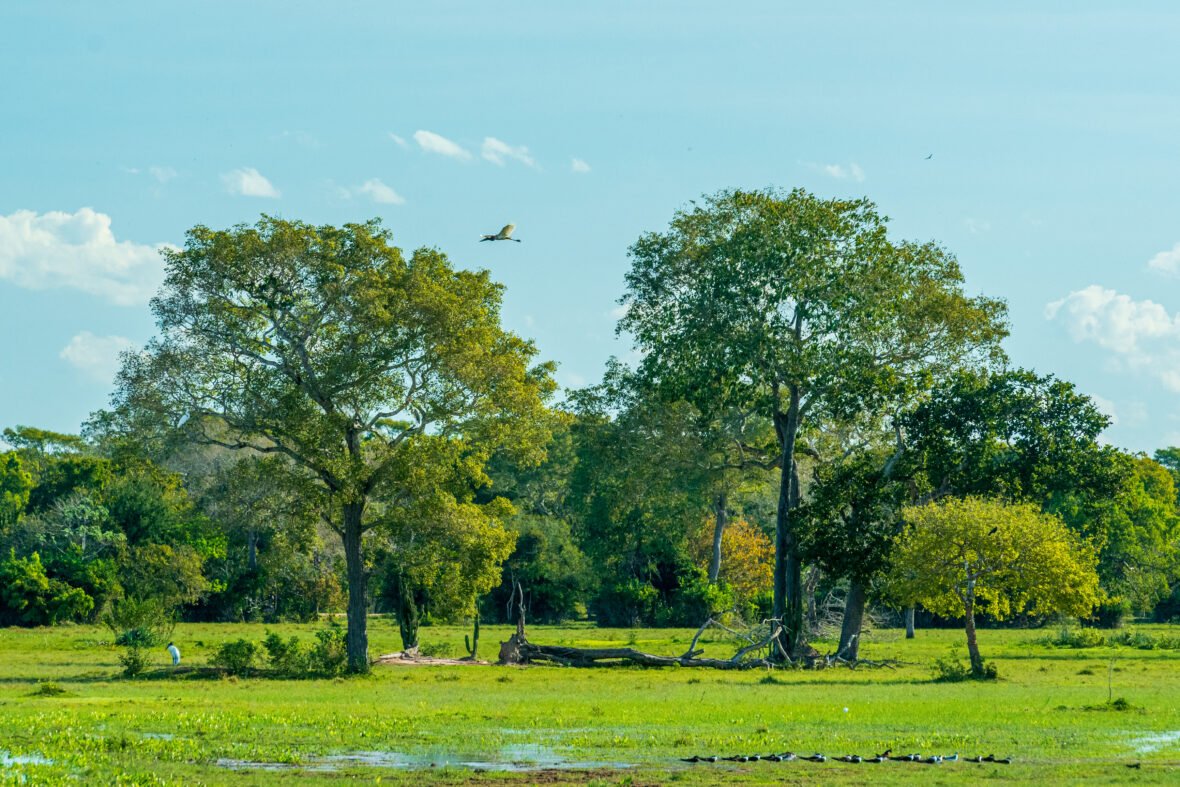Planting a large tree requires a substantial commitment of both time and finances, but the benefits may be substantial. An adult tree has the ability to provide shade, aesthetic appeal, and even enhance the value of a property. Nevertheless, it is important to do the procedure with caution and meticulousness in order to guarantee the tree’s triumphant establishing and sustained well-being. This thorough guide will provide a detailed walkthrough of every stage involved in planting a large tree, starting with the process of choosing the appropriate species to the subsequent upkeep required.

1. Select the Appropriate Tree
Selecting the correct tree species is the first and arguably most critical stage in the planting process. Take into account the following variables:
Climate: Select a tree species that is highly compatible with the specific climate and weather conditions in your area. Certain trees flourish in scorching, dry conditions, whilst others thrive in cooler, moderate areas.
Soil Preference: Different tree species have distinct preferences for different types of soil. Certain trees flourish in soils that are well-drained and sandy, whilst others have a preference for soils that are wet and loamy. Consider your soil type while picking a tree species.
Mature Size: Consider the mature size of the tree while picking a species. Make sure you have adequate room to allow the tree’s height and spread without infringing on surrounding buildings or other vegetation.
Growth Rate: Some trees grow swiftly and may soon overrun their area, while others grow more slowly. Consider the growth rate of the tree species before making your pick.
Environmental needs: Some trees have special environmental needs, such as full sun or moderate shade. Consider the light and moisture conditions in your planting location when picking a tree species.
2. Select the Planting Site
Once you’ve picked a good tree species, the following step is to find an ideal planting place. Consider the following factors:
sunshine: Most trees need full sun to grow, so pick a planting location that gets at least six to eight hours of direct sunshine every day.
Soil Drainage: Choose a place with well-drained soil to minimize waterlogging, which may lead to root rot and other illnesses.
room: Make sure you have adequate room to meet the tree’s mature size without encroaching on surrounding buildings, utility wires, or other plants.
Accessibility: Choose a place that is readily accessible for planting and future care, such as watering, trimming, and fertilizing.
3. Prepare the Soil
Before planting your tree, it’s vital to prepare the soil to create the greatest possible growth circumstances. Here’s how to do it:
Test the Soil: Use a soil test kit to analyze the pH and nutrient levels of your soil. This can assist you identify whether any additions are required to boost soil fertility.
Amend the Soil: Based on the findings of your soil test, amend the soil as required to increase its fertility, structure, and drainage. Common soil additives include compost, aged manure, and organic materials.
soften the dirt: Use a shovel or garden fork to soften the dirt in the planting area. This will assist produce a loose, aerated environment for the tree’s roots to flourish.
4. Dig the Hole
Once the earth is prepped, it’s time to dig the planting hole. Follow these steps:
Measure the Root Ball: Measure the diameter of the tree’s root ball to calculate the size of the planting hole. The hole should be two to three times bigger than the root ball and somewhat shallower than its depth.
Remove the Container: If the tree is in a container, gently remove it from the pot, taking cautious not to harm the roots.
Dig the Hole: Use a shovel to dig a hole that is two to three times wider than the root ball and slightly shallower than its depth. The sides of the hole should be inclined to aid stimulate root development.
Roughen the Sides: Use a shovel or garden fork to roughen the sides of the planting hole. This will assist stimulate the tree’s roots to expand out into the surrounding soil.
5. Inspect the Roots
Before planting the tree, take some time to check the roots for any indications of injury or illness. Here’s what to look for:
circular Roots: Check for circular roots around the perimeter of the root ball. If present, carefully pry out the roots and distribute them out in the planting hole.
Damaged Roots: Look for any damaged or broken roots and clip them using a pair of sharp, clean pruners.
Diseased Roots: Inspect the roots for any symptoms of disease, such as discolouration or decay. If you observe any indications of illness, consider picking an alternative tree or visiting a professional arborist for help.
6. Plant the Tree
Once the roots have been examined, it’s time to plant the tree. Follow these steps:
Place the Tree in the Hole: Carefully place the tree in the middle of the planting hole, ensuring sure that the top of the root ball is level with the surrounding dirt.
Backfill the Hole: Use the dirt that was taken from the planting hole to backfill around the tree’s root ball. Gently push down the earth to eliminate any air pockets.
Water well: After planting, water the tree well to help settle the soil around the roots. Use a gentle, steady stream of water to achieve complete penetration.
Mulch the Base: Apply a layer of mulch around the base of the tree to help retain moisture and inhibit weeds. Make careful to allow a few inches of gap between the mulch and the trunk to avoid rot.
7. Stake the Tree (if required)
In rare circumstances, it may be required to stake the tree to give support while it forms its root system. Here’s how to do it:
Drive the Stakes: Drive two or three wooden stakes into the ground around the tree, ensuring sure they are fairly spaced and slanted away from the tree.
Attach the Tree: Use soft, flexible ties to secure the tree to the stakes, ensuring cautious not to constrain the trunk or branches. The knots should be slack enough to allow for some mobility but tight enough to offer stability.
Monitor Regularly: Check the ties often to make sure they are not cutting into the tree or causing harm. Once the tree has formed its root system, you may remove the stakes and ties.
8. Water the Tree
Proper irrigation is vital for the tree’s health and establishment. Here are some ideas for watering freshly planted trees:
Water thoroughly: Water the tree thoroughly shortly after planting to help settle the soil around the roots. Use a gentle, steady stream of water to achieve complete penetration.
Monitor Moisture: Keep an eye on the soil moisture level and water the tree as required, particularly during dry spells. The soil should be uniformly wet but not soggy.
Avoid Overwatering: Avoid overwatering, since this may lead to root rot and other issues. Allow the soil to dry up somewhat between waterings, and alter your watering plan appropriately.
9. Prune (if required)
In rare situations, it may be required to trim the tree after planting to remove any damaged or crossed branches. Here’s how to do it:
Assess the Tree: Take a good look at the tree and identify any broken, diseased, or crossing branches that need to be removed.
Use Clean Tools: Use sharp, clean pruning shears to produce clean cuts and limit harm to the tree.
trim Carefully: Carefully trim the tree as required, making care to remove any broken or crossing branches while retaining the tree’s natural form and structure.
10. Fertilize (if required)
In rare situations, it may be required to fertilize the tree to supply needed nutrients for growth and establishment. Here’s how to do it:
Test the Soil: Use a soil test kit to examine the nutrient levels of your soil and decide whether fertilizer is required.
Choose the Right Fertilizer: Select a balanced, slow-release fertilizer particularly made for trees and shrubs.
Apply According to Instructions: Follow the manufacturer’s directions for application rates and timing, then spread the fertilizer evenly around the base of the tree.
11. Monitor for Pests and Diseases
Keep an eye out for any symptoms of pests or illnesses that may impair the tree’s health. Here are some typical concerns to check for:
Insects: Look for evidence of insect damage, such as holes in the leaves, discolored foliage, or sticky sap. Treat any infestations quickly with insecticidal soap or other relevant pesticides.
infections: Watch for symptoms of fungal or bacterial infections, such as leaf patches, wilting, or cankers. Prune away any diseased branches and treat the tree with fungicides or other relevant treatments as required.
animal Damage: Protect the tree against animal damage, such as deer browsing or mouse gnawing, by installing fence or other deterrents.
12. Provide Ongoing Care
Once the tree is planted, it’s necessary to give continuing maintenance to preserve its health and longevity. Here are some recommendations for continuous care:Water frequently: Continue to water
the tree frequently, particularly during dry months, to assist maintain soil moisture levels.
Mulch Regularly: Refresh the mulch around the base of the tree occasionally to help retain moisture and inhibit weeds.
Monitor Growth: Keep a watch on the tree’s growth and development, and prune as required to preserve its form and structure.
Protect against Environmental Stressors: Protect the tree from environmental stressors, such as severe heat, cold, or wind, by providing suitable shelter or protection.
13. Monitor Growth
As the tree establishes itself, check its growth and development to ensure that it is healthy and flourishing. Here are some markers of good development to check for:
New Growth: Look for new shoots, leaves, and branches sprouting from the tree, which indicate healthy growth and development.
robust Growth: Healthy trees display robust growth, with strong, sturdy branches and brilliant foliage.
Disease and Pest Resistance: Healthy trees are better equipped to fight diseases and pests, so look for symptoms of damage or infestation and treat quickly if required.
14. Prune Regularly
Regular pruning is necessary for preserving the health, form, and structure of the tree. Here are some suggestions for pruning:
Prune yearly: Prune the tree yearly to remove any dead, damaged, or diseased branches, as well as any crossing or competing branches.
Prune Carefully: Use sharp, clean pruning tools to make clean cuts and limit harm to the tree. Make incisions slightly outside the branch collar to facilitate healing.
Prune at the Right Season: Prune deciduous trees in late winter or early spring before new growth appears. Prune evergreen trees in late spring or early summer after new growth has hardened off.
15. Enjoy Your Tree
Finally, take the time to appreciate your tree and all the advantages it gives. Whether it’s giving shade on a hot summer day, attracting birds and animals, or just adding beauty to your environment, your tree is sure to provide you delight for many years to come.
Planting a huge tree is a pleasant and joyful activity that demands careful preparation and attention to detail. By following these procedures and providing continuous care and maintenance, you can guarantee that your tree flourishes and improves your landscape for centuries to come.




